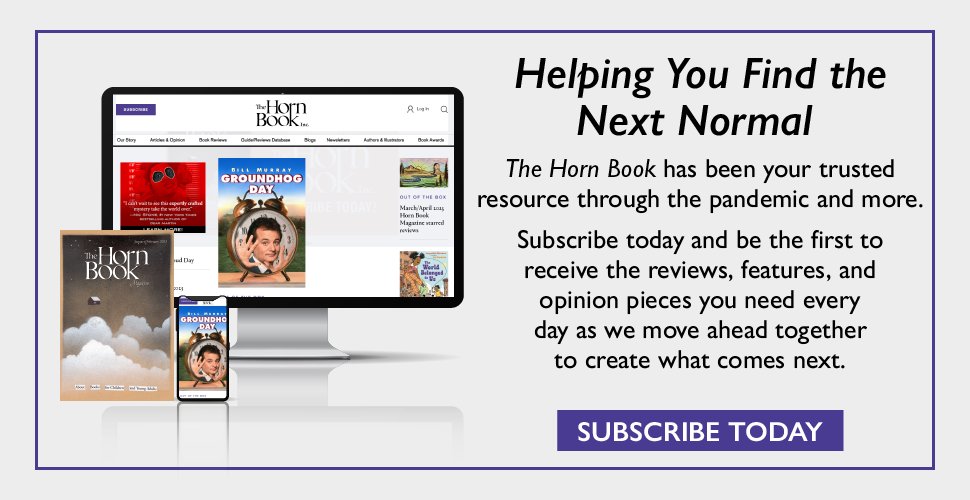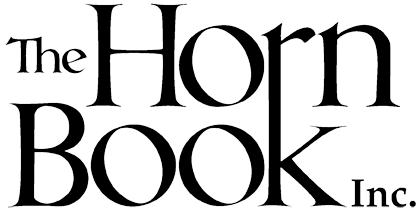Right about now, the 2018 Caldecott chair is likely receiving a steady trickle of self-published books in the mail.
When I served on the 2009 Caldecott committee, self-published authors and illustrators who wanted to submit something for award consideration had to send it to every committee member and also to ALSC. That adds up to a whopping 16 books, and lots of postage. And if they are submitting the book to several award committees, that can really add up. Thankfully for the indie crowd, this rule changed a few years ago, and now only chairs and the ALSC Office are required to get copies. As chair, I got several of these submissions each week, and I even had a few waiting for me on my desk at work after my committee had deliberated. The submissions often came with heartfelt letters and self-generated marketing materials attached. While I can’t share any specific titles with you, they did indeed run the whole gamut: the good, the bad, and the ugly. Here are a few patterns that emerged in the submissions I received.
The amateur hour: If you are professional who works with children’s books, I am sure someone has said to you, “I have a great idea for a picture book...” Many of the books I received were labors of love by the author, to bring these ideas to fruition. There was often the kernel of a good idea there, but many fell down in the art department. It looked as if the authors had invited family members, next-door-neighbors, or college friends to illustrate their books. Or the writers themselves pulled out an old set of watercolors to create the art. They were amateur artists, and it showed.
Where’s the story?: There were a few books that had exceptional art, often by an art student or practicing artist, but the story was an afterthought. It seemed as if someone had told the artist they could and should create a picture book out of their portfolio. These submissions proved the point that a picture book is more than a collection of pretty pictures.
The slush pile: Whoever coined this phrase was a genius, because many of the books I received left me cold. A few were disturbingly racist and sexist. Others were extremely odd, and you have to wonder how anyone could think a children’s picture book on this topic was a good idea. Some everyday objects should not be anthropomorphized!
Diamonds in the rough: There were a few books that had interesting art and compelling stories to tell. They were also handsomely printed and bound. When I had enough of these stand-outs, which were few and far between, I would pack them up and send them off to my fellow committee members for a second opinion in what we called the “indie box.”
How far did any of these self-published books get in the award process? That I can’t share, but I think it is telling that a self-published book has never, to my knowledge, won the award. And, I’m sad to say, it is unlikely to happen. While the tools and services available to authors and illustrators to make their self-published books look their best are getting more sophisticated every year, indie authors don’t have the talents of professional editors, art directors, and book designers to draw on. They don’t have the funds to pay for high-quality paper, full-color endpapers, or even dust jackets; all of the things that make picture books beautiful physical objects that make children (not to mention committee members) want to touch, open, and pore over. When it comes to awards, publishing is not an even playing field.
A word of warning to authors or illustrators who may be submitting their self-published work for award consideration (and some major publishing houses could use a reminder, too): read award submission guidelines carefully. If your book is not eligible for an award, no matter how wonderful it is, don’t submit it. It is a waste of your time and money. Also. Committee chairs can’t return your book to you, and they don’t have the time to acknowledge that it has been received (get a tracking number from your courier). And no, the Caldecott chair cannot pass your work along to the Newbery chair.
While it may be difficult or even impossible for a self-published book to win a Caldecott, I hope independent writers and artists keep at it. In my career as a librarian, I have sometimes turned to indie books on topics that major houses were not addressing. Recently, to support one her students, a kindergarten teacher asked me for a simple picture book about a child who wears hearing aids. El Deafo was too long, and other titles were about getting cochlear implants, not this boy’s experience. The best book I found was Maxi’s Super Ears, written and illustrated by Maggie Klein and published by Maggie Klein. While it did not win a Caldecott, it is no less important or necessary to its readers.
So what’s your take? Could a self-published picture book ever win?

RECOMMENDED
ALREADY A SUBSCRIBER? LOG IN
We are currently offering this content for free. Sign up now to activate your personal profile, where you can save articles for future viewing.








Add Comment :-
Comment Policy:
Comment should not be empty !!!
Loralyn Noragong
Why not include an Indie award category? I think it can open up a whole new area for the self published industryPosted : Aug 03, 2022 09:19
Robert Clark
Thank you for this article. I found it most enlightening. I was researching my chances of winning the Caldecott award. I believe I've done a good job with my book "The Mystery of The Patch" but will keep my expectations in check.Posted : Nov 24, 2019 08:46
Chris Mason
While I think the post is interesting it is also a bit biased since the Caldecott award is open only to American authors and illustrators only.This requirement locks out American Authors for example, who use illustrators from other countries. Well I can't speak for other Indie authors I can speak for myself. I cannot afford the $7000 most American illustrators require. This price is simply out of the question. It does not fit my budgetary constraints. However, I can't afford a really talented illustrator from the Philippines. I understand the kill the cop being in American contest and therefore only open to American authors and illustrators. However, that may be why why many of the book the author comes across in this post look unprofessional. Many self-published authors do not have the budgets to hire American illustrators and therefore have to go for cheaper but just as skilled illustrators from other countries. Just my two cents.Posted : Apr 03, 2018 11:24
Rachel Payne
Thanks for sharing a bookseller's experience!Posted : May 12, 2017 01:45
Rosanne Parry
In my experience in the bookstore, I've found the indie picture books that come our way are often clever or charming or have the kernel of a good idea in them. But they don't quite stand up to the traditionally published books in quality. But where they do excel is in the treatment of a niche issue like the hearing aids book you mentioned, or in exploring a topic too risky for a regular publishing house. And I think if an indie picture book ever takes the prize it will be because it lands upon a topic that resonates beautifully with the reader precisely because no-one else is brave enough to tackle it.Posted : May 11, 2017 04:26